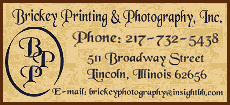|
 Mattel Inc., which on Tuesday recalled about 19 million toys worldwide, said it was working on a "responsible approach" but could not provide details. Mattel Inc., which on Tuesday recalled about 19 million toys worldwide, said it was working on a "responsible approach" but could not provide details.
Amid the lack of clarity, many parents are confused about how to dispose of the toys. That may mean many of them will end up in the trash and eventually in landfills, where they could possibly leach toxins into the groundwater.
All parents know at this point is that they need to get them out of their kids' toy chests.
In Nashville, Tenn., Courtney Wilson discovered she had some recalled Polly Pocket dolls with magnets from Mattel, and she's decided to throw them out. Meanwhile, another parent Jennifer Mulligan of Franklin, Tenn., is making a different choice: she plans to take the recalled dolls back to the store.
Mulligan said that her 6-year-old daughter "probably has about every Polly Pockets ever made."
She added: "If we did have an affected toy, I'd see it as lesson for her. ... If there was something wrong with the toy, it's up to the store to replace it with another toy."

The Mattel recall is the latest in a slew of recalls involving more than 10 million toys since June in the U.S. alone.
The most alarming has been the recall of toys covered with lead-based paint. Children who ingest lead-laced paint can suffer brain damage, and improper disposal of lead-based paint can damage the environment.
Mattel's recalls cover several hundred thousand "Sarge" vehicles and almost a million toys from its Fisher-Price line, including the Sesame Street and Nickelodeon characters.
Its recalls follow the recall of 1.5 million items from RC2 Corp.'s Thomas & Friends Wooden Railway toy line, announced in June.
Many retailers like Wal-Mart Stores Inc. are offering the option of returning the recalled toys to stores where they are sent back to the makers, but they prefer shoppers sending them back to manufacturers in packaging that the maker provides in exchange for a refund.
"Certainly, there is a significant expense to manage a recall," said Eric Johnson, professor of Tuck School of Business at Dartmouth College. "This is a big headache."

Lead-painted toys fall under the category of products that would need to be destroyed or properly disposed of, according to the Consumer Product Safety Commission in Washington, D.C.
But plenty of other toys -- like the millions of toys including Batman and Polly Pockets recalled this week by Mattel because of hazardous magnets
-- don't necessarily have to be destroyed.
Still, they could present future legal risks if they pop up in a Salvation Army store or other resale site. The magnetic toys were recalled because their small, powerful magnets could harm children if they're swallowed.
Scott Wolfson, a spokesman at the CPSC, said that a recalled product like a lead-laced toy cannot be exported for resale.
[to top of second column]
 |
 Disposal sometimes is determined as part of a company's recall negotiations with the agency, but ultimately must be in accordance with state and federal environmental laws, he said.
Wolfson said he could not discuss whether the agency entered into any specific arrangements with Mattel on how it should handle its inventory of recalled products.
For toys that don't pose an environmental hazard, such as the recalled magnetic toys, a manufacturer has more leeway. A company may even seek to ship the items for sale abroad.
"Some companies do request to re-export their products to another country," Wolfson said.
In such cases, the manufacturers are required to tell the CPSC, which alerts the country where the product is slated to go and gives them the opportunity to deny entry.
Some consumer watchdogs believe that many parents may find returning a toy and waiting for a voucher a cumbersome process and opt instead to simply throw out the dangerous toys.
Perry Gottesfeld, executive director of Occupational Knowledge International, a San Francisco-based nonprofit group that tracks environmental health issues, worried that "ultimately, this problem is also creating a landfill problem because most of these products are not likely to be captured by manufacturers," Gottesfeld said.

Manufacturers appear to be challenged by how they're going to handle such a massive recall.
Asked what the company plans to do with the recalled toys, Jules Andres, a Mattel spokeswoman, said it was working on a "responsible approach," but could not provide further details.
Wayne Charness, a spokesman at Hasbro, which recalled faulty Easy Bake ovens this year from China, made it clear that he wants customers to bring the defective products back so they can crush them.
He declined to comment on how many have been returned so far.
Nancy Davies, a spokeswoman for RC2, said that since Aug.8, RC2 has recovered 56 percent of the toys included in its June 13 recall. The company recalled 1.5 million toys in North America.
"We are still working with the CPSC to determine the best method of disposal for the recalled products," she said. "Once that is determined, the company will dispose of the potentially unsafe toys."
[Associated Press; by Anne
D'Innocenzio]
AP business writer Alex Veiga in Los Angeles and AP writer John Gerome in Nashville, Tenn., contributed to this report.
Copyright 2007 The Associated Press. All rights reserved. This
material may not be published, broadcast, rewritten or
redistributed.
 |